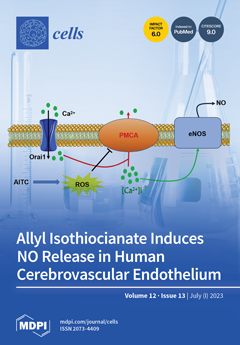Open AccessArticle
A YAP/TAZ–ARHGAP29–RhoA Signaling Axis Regulates Podocyte Protrusions and Integrin Adhesions
by
Manuel Rogg, Jasmin I. Maier, Martin Helmstädter, Alena Sammarco, Felix Kliewe, Oliver Kretz, Lisa Weißer, Clara Van Wymersch, Karla Findeisen, Anna L. Koessinger, Olga Tsoy, Jan Baumbach, Markus Grabbert, Martin Werner, Tobias B. Huber, Nicole Endlich, Oliver Schilling and Christoph Schell
Cited by 13 | Viewed by 3744
Abstract
Glomerular disease due to podocyte malfunction is a major factor in the pathogenesis of chronic kidney disease. Identification of podocyte-specific signaling pathways is therefore a prerequisite to characterizing relevant disease pathways and developing novel treatment approaches. Here, we employed loss of function studies
[...] Read more.
Glomerular disease due to podocyte malfunction is a major factor in the pathogenesis of chronic kidney disease. Identification of podocyte-specific signaling pathways is therefore a prerequisite to characterizing relevant disease pathways and developing novel treatment approaches. Here, we employed loss of function studies for
EPB41L5 (
Yurt) as a central podocyte gene to generate a cell type-specific disease model. Loss of
Yurt in fly nephrocytes caused protein uptake and slit diaphragm defects. Transcriptomic and proteomic analysis of human
EPB41L5 knockout podocytes demonstrated impaired mechanotransduction via the YAP/TAZ signaling pathway. Further analysis of specific inhibition of the YAP/TAZ-TEAD transcription factor complex by
TEADi led to the identification of
ARGHAP29 as an
EPB41L5 and YAP/TAZ-dependently expressed podocyte RhoGAP. Knockdown of
ARHGAP29 caused increased RhoA activation, defective lamellipodia formation, and increased maturation of integrin adhesion complexes, explaining similar phenotypes caused by loss of
EPB41L5 and
TEADi expression in podocytes. Detection of increased levels of ARHGAP29 in early disease stages of human glomerular disease implies a novel negative feedback loop for mechanotransductive RhoA—YAP/TAZ signaling in podocyte physiology and disease.
Full article
►▼
Show Figures






